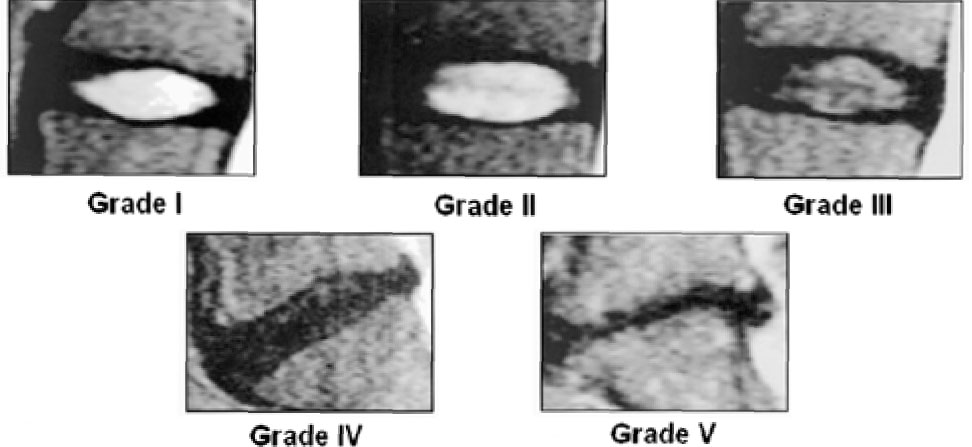Table of Contents
Pfirrmann grading system
The Pfirrmann grading system is a radiological classification system used to assess the severity of lumbar degenerative disc disease. It was developed by Dr. Christian W. A. Pfirrmann and colleagues and is widely used by radiologists and spine specialists to describe the condition of lumbar intervertebral discs.
The Pfirrmann grading system categorizes intervertebral discs based on their appearance in magnetic resonance imaging (MRI) scans. It takes into account several factors to assess the degree of degeneration:
Disc Height: The height of the intervertebral disc is evaluated, and any reduction in disc height is noted. As discs degenerate, they often lose height, leading to a decrease in the space between adjacent vertebrae.
Signal Intensity: The signal intensity of the disc is assessed on T2-weighted MRI images. Healthy discs have a bright signal, whereas degenerated discs may show a darker or more heterogeneous signal.
Disc Structure: The structure of the disc is examined, including the distinction between the nucleus pulposus (the inner, gel-like part) and the annulus fibrosus (the outer, fibrous part). Degenerated discs may show changes in the structure, such as fissures or tears.
Based on these criteria, the Pfirrmann grading system assigns a grade from I to V to each intervertebral disc.
The Pfirrmann grading system is valuable in clinical practice and research because it provides a standardized way to communicate the degree of disc degeneration between healthcare providers. It helps guide treatment decisions and allows for tracking changes in disc health over time. However, it's important to note that this grading system assesses the structural aspects of the disc but does not directly correlate with the severity of symptoms or functional impairment, as many individuals with mild or moderate disc degeneration may not experience significant back pain or other symptoms.
Intervertebral disc degeneration is natural course after one's 2nd decades. And its incidence and grade were increased with age, and more affected by sexual differences after 6th decades 1).
Classification
Disc degeneration can be graded on MRI T2 spin-echo sequence weighted images using a grading system proposed by Pfirrmann
This classification is not used on routine spine reports, being more important for research purposes.
Grade I
Disc is homogeneous with bright hyperintense white signal intensity and normal disc height.
Grade II
Disc is inhomogeneous, but keeping the hyperintense white signal.
Nucleus and annulus are clearly differentiated and a horizontal gray band could be present.
Disc height is normal.
Grade III
Disc is inhomogeneous with an intermittent gray signal intensity.
distinction between nucleus and annulus is unclear.
disc height is normal or slightly decreased.
Grade IV
Disc is inhomogeneous with a hypointense dark gray signal intensity.
there is no more distinction between the nucleus and annulus.
disc height is slightly or moderately decreased.
Moderate disk degeneration (Pfirrmann IV) in lower lumbar segments is a risk factor of disk herniation or foraminal stenosis requiring reoperation after MD in LSS 2).
Grade V
Disc is inhomogeneous with a hypointense black signal intensity.
there is no more distinction between the nucleus and annulus.
The disc space is collapsed.
